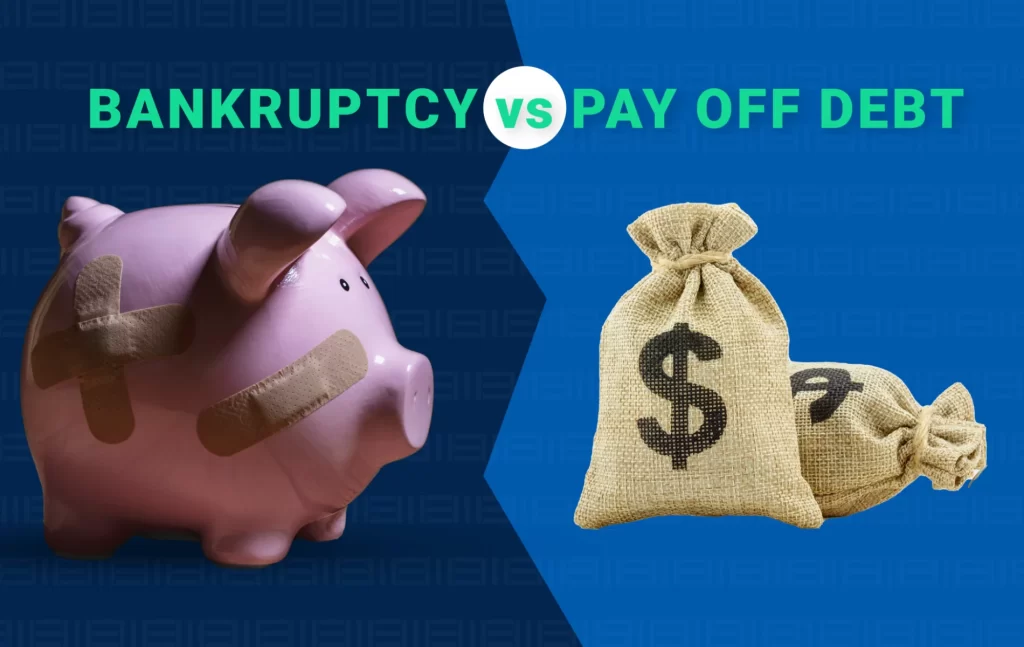The debate of credit repair versus Chapter 7 bankruptcy is one that has long been discussed among financial and legal experts. The two options have the potential to have a lasting impact on an individual’s financial well-being and it is important to understand the differences between them in order to determine which is the best option for a person in their particular situation. In this article, we will discuss the benefits and drawbacks of each approach, compare them side-by-side, and go over the pros and cons of each so that you can decide which is the better option for you.
What is Credit Repair?
Credit repair is the process of identifying, disputing, and correcting inaccurate or incomplete information on a person’s credit report in an effort to improve their overall credit score and financial standing. Credit repair can be done by the individual or with the help of a knowledgeable credit repair firm. Credit repair is the most commonly used method to rebuild an individual’s credit, as it is relatively simple and cost-effective.
The process of credit repair begins with getting a copy of the individual’s credit report and examining it closely. The credit report is broken down into several sections and is used to precisely identify errors or inconsistencies. The erroneous or incomplete information can include errors on the account history, misspelled names, or incorrect personal information. Once the errors have been identified, it is then up to the individual to dispute the inaccuracies with the credit bureau that provided the report. This process can take anywhere from one to six months, and disputed entries are typically deleted from the report by the time it is received back from the credit bureau.
What is Chapter 7 Bankruptcy?
Chapter 7 bankruptcy is a form of relief from debtors who are unable to keep up with their payments. It is a legal procedure that wipes away certain types of debts and allows the debtor to start fresh and be free of the burden of the previous debt. This type of bankruptcy is beneficial to those who have a high amount of unsecured debt such as credit card debt and are unable to pay it back. In many cases, filing for Chapter 7 bankruptcy can help individuals to get back on their feet and start rebuilding credit.
Some of the benefits of filing for Chapter 7 bankruptcy include the ability to write off a portion of your debt, the elimination of most debts, and the chance to keep certain assets that may be subject to sale under other forms of bankruptcy. One of the primary disadvantages of choosing this form of bankruptcy is that the individual must usually wait between six and eight years before they are able to receive credit accounts or loans without a cosigner or a security deposit.
Comparison
When considering both options, it is important to understand the advantages and drawbacks of each in order to determine which is ultimately best for an individual’s particular financial circumstances.
The primary benefit of credit repair is that it is often a much faster and simpler method to get out of debt and repair one’s credit score. The timeline of the process is typically shorter, with the majority of the results being achieved in a matter of months. Furthermore, credit repair is much less expensive than filing for Chapter 7 bankruptcy, as it requires no legal expenses or filing fees.
Secondly, there are also several drawbacks of credit repair. Credit repair does not remove negative items from the credit report and can, in some cases, take upwards of a year before the individual is able to achieve a significantly improved credit score. Additionally, if there are multiple creditors to be contacted, the process can be rather time-consuming and costly.
In comparison, filing for Chapter 7 bankruptcy does have some definite advantages. The most widespread of these is that it quickly provides the individual with a fresh start, allowing them to leave old debts behind and start over. The process is generally a quicker and more cost-effective way to pay off large amounts of debt and successfully start to rebuild credit.
However, it is important to remember that filing for Chapter 7 bankruptcy is still a legal process and thus involves certain costs and lengthy timelines. Furthermore, the effects of filing for bankruptcy last much longer, with the individual typically having to wait six to eight years before they are able to receive credit without a cosigner or a security deposit.
Final Thought
The decision of whether to choose credit repair or Chapter 7 bankruptcy is a highly personal one and should be considered with careful thought and research. In any case, the best option is typically going to be the one that provides the most immediate and long-term benefit to the individual’s particular financial situation.
Whilst credit repair is a faster and more affordable method to rebuild credit, it typically does not provide the same level of legal protection and debt relief that Chapter 7 bankruptcy does. On the other hand, filing for bankruptcy is the better option for those looking for a fresh start, however, it is incredibly important to note that the effects of filing for bankruptcy are a lengthy and costly process in both time and money.
Ultimately, the most suitable option for any one person is always going to depend on their individual financial situation and personal circumstances. By understanding both credit repair and Chapter 7 bankruptcy intricately, it is possible to determine which option is best for you and your financial future.

